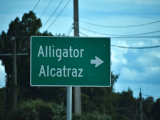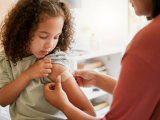Jun 30, 2011 (CIDRAP News) – New data from Sweden today added more evidence of a link between a 2009 H1N1 influenza vaccine and narcolepsy in children and adolescents, suggesting that those who were vaccinated had more than a sixfold increase in risk for the condition.
The findings come from a study by Sweden's Medical Products Agency (MPA), which examined all cases of narcolepsy with cataplexy reported in young people (19 years and under) in Sweden in 2009 and 2010. The study follows an earlier investigation that covered four regions and showed a fourfold increase in risk of narcolepsy in those who received the Pandemrix H1N1 vaccine, made by GlaxoSmithKline.
The MPA gathered information on all confirmed and suspected cases of narcolepsy with cataplexy, and two clinical experts examined the medical records to classify the diagnosis according to the American Academy of Sleep Medicine's criteria for narcolepsy. Cataplexy is defined as a sudden and transient loss of muscle tone, often triggered by emotions. The study focused on narcolepsy with cataplexy because it is the most severe and readily defined form of narcolepsy.
The investigators found 81 cases that occurred during the 2 years, the report says. Of the 81 patients, 69 (85%) had received the Pandemrix vaccine before illness onset. The population incidence of the condition peaked at 6.58 cases per 100,000 in the last quarter of 2009 and first quarter of 2010, aligning with the pandemic and the vaccination campaign.
In a retrospective cohort study, the investigators examined data on vaccinated and unvaccinated children and adolescents from Oct 1, 2009, the beginning of the pandemic period, to the end of 2010. They found a narcolepsy incidence rate of 4.2 per 100,000 in the vaccinated group, versus 0.64 per 100,000 in the unvaccinated cohort, indicating the risk was 6.6 times higher in the vaccinees (95% confidence interval, 3.1 to 14.5).
"The incidence was substantially higher within 3 months of the vaccination, 14.1/100,000 compared to 1.3/100,000 in the later time window," the report adds.
Also, patients who had narcolepsy after vaccination were more likely to have cataplexy as one of the first symptoms (43% versus 8%; P=.02) and to have more than two initial symptoms (46% versus 17%; P=.05).
"These new data from Sweden provide strengthened evidence that vaccination with Pandemrix is associated with an increased risk for ncarcolepsy with cataplexy in children and adolescents," the report states. "Further cross-disciplinary and long-term follow-up research is urgently needed to explain possible causative mechanisms."
As noted in the new report, signs of a Pandemrix-narcolepsy link has also been seen in Finland, where a population-based registry study pointed to a ninefold increase in risk for vaccinated children and adolescents.
The European Medicines Agency (EMA) is conducting its own investigation into the narcolepsy cases, with results due in July. In March the EMA said it was including some Irish cases in its probe.
See also:
Jun 30 MPA report
Jun 30 Eurosurveillance summary of Swedish report
Mar 29 CIDRAP News item on earlier Swedish study


















